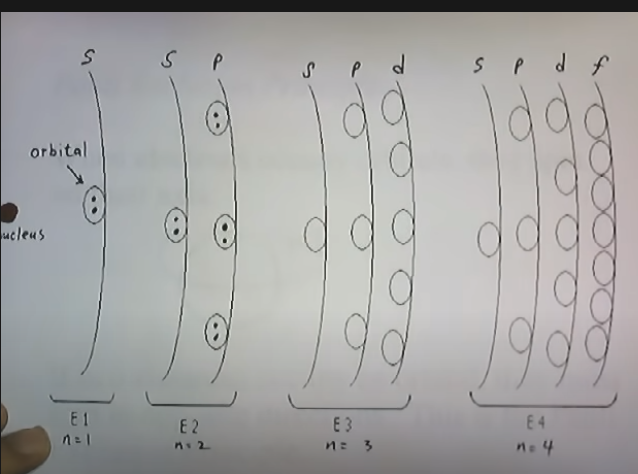But from other diagrams I have seen it looks like a large 3 dimensional space around the nucleus where there is a probability of finding the electron
That's exactly what orbitals are. The shape they have is actually a probability distribution that shows the most likely location of the electrons.
So are the orbitals really around the nucleus or are they subparts of the subshells?
The orbitals are distributed "around" the nucleus, but their shape is to be considered strictly a probability distribution and not some distinct “shape” that houses the electrons. Orbitals that have the same value for $l$ form a subshell (see below).
And how are they related to the principal quantam no. and the angular momentum quantum no.
The principle quantum numbers have an integer value $n$, and generally speaking, the energy of an electron in an atom increases for increasing values of $n$.
The angular momentum quantum number denoted by $l$, is also an integer that defines the shape, as you have above, $s,p,d,\cdots$
This number is allowed to take on the values $l = 0, 1, 2,\cdots, (n – 1)$. Also, the higher the value of the angular momentum quantum number, the higher is the value of the angular momentum of the electron.


